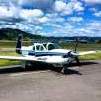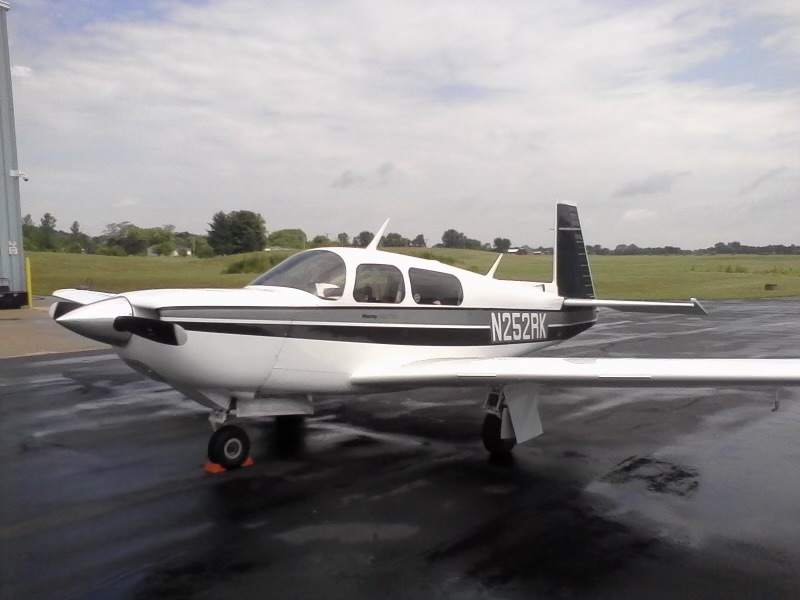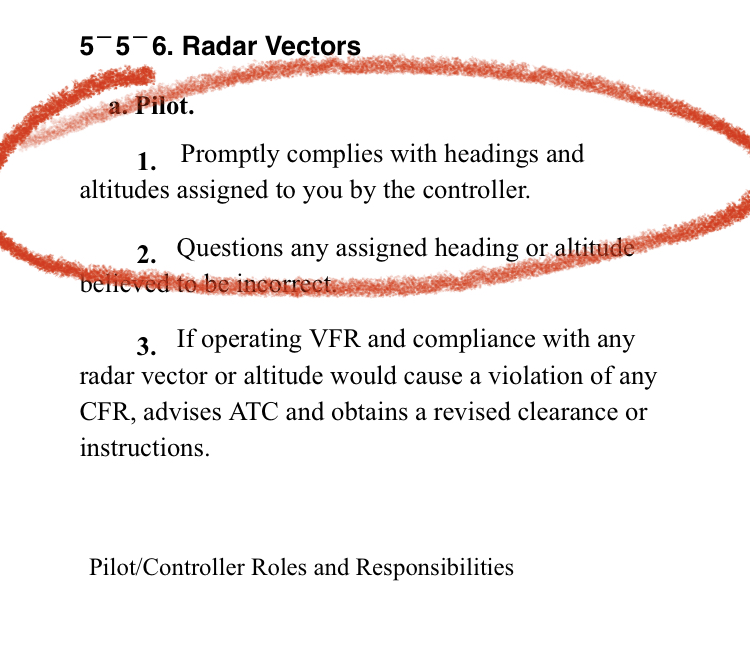-
Posts
5,490 -
Joined
-
Last visited
-
Days Won
25
Content Type
Profiles
Forums
Blogs
Gallery
Downloads
Media Demo
Events
Everything posted by Ragsf15e
-
However, on the bright side, Im pretty sure you can get to all the config pages yourself without special black boxes. Take pictures before changing them... I believe you have to turn on the unit while holding enter key (hopefully it works good enough for that). After that it’s pretty easy to cycle through the pages.
-
Agree, but in addition to the oil, heating the cylinders & pistons is good if it’s really cold and the clearances are reduced by the contraction. If you heat the oil long enough and cover the cowl with a blanket, I bet it warms the top of the engine too.
-
If your 3rd class medical ends up in the FBI crime lab you’ve got much bigger problems than a copied “original” signature!
-
See, it works! If they weren’t on your battery would have likely been toast next time you went to fly!
-
Yeah, I guess the key is diffusing the heat over an area and over time. I.e. putting it through a 4” duct through the cowl flaps for 4 hours vs shooting a heat gun directly at a part of the engine for a “quick” preheat. Maybe the actual amount of heat is the same, but warming the entire compartment over several hours is probably more effective and safer.
-
One other issue with a heat gun or anything else “quick” is that the engine and oil is a huge heat sink. Nothing is going to happen real fast. You can point 500 degrees of heat at cylinders 1/3, and you might even get the outside metal temps up pretty high, but did you heat the pistons and the oil? Or #2/4? Likely not. You really need to get the entire engine (inside and out) and oil up to a reasonable temp. no matter what, it’s going to take a little while. Even if your cylinder temp says 100 degrees, where is that sensor and does that mean the whole engine? If you want a good long term solution, reiff or tanis heats the oil and each cylinder. You can look on their website, but even they will tell you it takes time from a cold engine. If you want cheap (and not very mobile), a small space heater with dryer vent up the cowl works great. I use it on the lowest setting. I also have a text enabled power socket that I use to turn on the heater from home. I typically turn it on the night before. Outside temps of 10 degrees yield oil and cylinder temps of ~70 (it’s in a hangar).
-
Definitely leave the strobes on. Never turn that switch off. Cheap and tso’d. Never thought I’d put those two words in the same sentence.
-

Seeking replacement gas cap o-ring seals
Ragsf15e replied to TravelVeteran's topic in Vintage Mooneys (pre-J models)
The other place I’ve got them (the original black ones) is lasar. They generally have the old version in stock. Lasar in California, they are an msc. -
You described it perfectly. And no, it shouldn’t drip oil...
-
You guys still have a step? Some of the one piece belly airplanes are “much” faster due to not replacing the step either...
-
One more reason I wish i had the one piece. That and the million screws. However, my ‘68 has survived without a gear incident all these years. I hope to keep that going even if it’s a little more work to clean and remove.
-
Try the red wash wax all under the airplane and you’ll be really happy. It definitely gets off exhaust and oil better than the blue. I always go blue on top, red on bottom.
-
What kind of Dr? My AME is a cardiologist and the nurse told me their eye test machine is not calibrated, tested or maintained to the same standards as an optometrist would be. I have a very similar issue to you, but they are pretty reasonable.
-
Ahh yes, that’s a common leak I forgot... oil quick drain is a good place to look for a drip!
-
It’s the chrome cylinders. I have the same setup. Chrome cylinders are known to have more blow by then steel. The blow by pressure increases drips out the breather. Chrome cylinders just use more oil. How much per hour is it using? Mine is about a qt/5 hours. Personally, I still keep mine at 6 qts. You are right about the cooling. Also oil is cheap.
-
Mike, definitely important to identify exactly what tube. The ~1/2” tube is the breather. You normally will see oil out of that and it’s ok. Maybe if you have an oil/air separator you don’t have much and it increased? The rest of us without separators normally have some drips there and mist from that tube coats the belly during flight. Amount of oil out that tube depends on how much blow by, how full you keep the oil, patterns vs cruise, etc. If it’s not that tube, @PT20J laid out the others. Two ~1/8” diameter tubes (mine are attached) are the sniffle drain and fuel pump drain. Shouldn’t get oil out those, but a failing mech fuel pump will drip oil there. Further aft there’s also a drain (mine is blue) for the fuel selector sump. There’s another in the same area for the electric pump. Both of those are aft of cowl flaps. Also, oil goes everywhere in there. You might want to open up the cowl and poke around to see if a leak is showing up seeping down there. Common leaks are oil return lines just below the cylinders, rocker box gaskets, and gaskets around all your accessories (mags, vac, governor). It doesn’t take much oil to look real bad.
-
Unlike @Niko182, I think the O might fit you just fine. Yeah, if you’re traveling with 4 adults all the time, a 6 seater is nice, but even high school kids are lighter and more flexible than adults. My wife flys happily in the back of our F while my son flys copilot and my daughter watches movies in the other back seat. Mooney is good with 2 adults and 2 kids. Make sure your family aspirations stop there though! So an ovation got almost all the extra length in the baggage, so room shouldn’t be a problem. Heck I’ve been carrying around 2 carseats and luggage in my F’s baggage for the last two years... @Niko182is probably right that you should check the fuel required for your planned flights vs your planned payload vs the useful load available. Ovations have a wide range, but somewhere between 775-1000ish. If you want AC for Arizona, it’s kinda heavy. An Eagle might also work for you. Generally the same, most have better UL. Probably no AC though. Maybe if you give some details like 450lbs of people plus, 100lbs of luggage, plus desired 400nm range with 1 hour reserve, someone can run the numbers for you and see what kind of UL you need?
-

1974 M20F STEC 30 Autopilot "Drag"
Ragsf15e replied to AlbertF's topic in Vintage Mooneys (pre-J models)
As @Rwsavorysaid, you should be overriding it each time you do the ground test (so every flight... no, I don’t do it every time either) to make sure you can. That’s part of the test. But no, it won’t hurt it. In fact, I’ve heard people say they had problems if they aren’t exercised regularly. -

Can you log PIC time in a Mooney without Complex Rating?
Ragsf15e replied to 201er's topic in General Mooney Talk
No doubt. When the faa is concerned, nothing is simple. Just yesterday I was laughing that they have a legal interpretation about the meaning of the word “known” (in the context of icing). -

Can you log PIC time in a Mooney without Complex Rating?
Ragsf15e replied to 201er's topic in General Mooney Talk
And here it is... seems that if both want to log pic, the safety pilot is the actual pic and thus needs HP/Complex rating so she/he can be pic. The other pilot can log pic due to being sole manipulator of controls. if the safety pilot isn’t pic, then aopa has a legal interpretation... see below. The safety pilot: Must be at least a private pilot. (FAR 91.109[b][1]) Must hold the category and class ratings (airplane, single-engine land) for the aircraft flown. (FAR 91.109[b][1]) Must have a current medical. As a required flight crewmember, the safety pilot must have a current medical certificate. (FAR 61.3[c]) Must occupy the other control seat (normally, although not required, the right or "copilot's" seat). (FAR 91.109[b][1]) Safety pilot. Pilot-in-command time may be logged if acting as PIC. The two pilots must agree that the safety pilot is the acting PIC. PIC time may be logged only while the other pilot is "under-the-hood." PIC time may be logged because FAR 61.51(e)(1)(iii) allows certificated pilots to log PIC when acting as PIC of an aircraft on which more than one pilot is required by the regulations (91.109[b]) under which the flight is conducted. A safety pilot is required for "hood work." Second-in-command time may be logged if not acting as PIC. Usually the case if the safety pilot cannot act as PIC. An example might be when the safety pilot is not endorsed for the particular airplane (such as in a high-performance aircraft). SIC time may be logged because FAR 61.51(f)(2) allows a pilot to log all flight time during which he acts as second in command of an aircraft under which more than one pilot is required by the regulations (91.109[b]) under which the flight is conducted. Other considerations Summary of logging PIC. Both pilots may log PIC time if the safety pilot is the acting pilot in command. FAR 61.51(e) allows both the sole manipulator of the controls and the acting PIC to log PIC time. Acting as PIC. The safety pilot should not take the role as acting PIC lightly. What if the aircraft is involved in an accident, incident, or violates a FAR? High-performance aircraft. AOPA has a letter of interpretation that states when the safety pilot is not the acting PIC, a high-performance "sign-off" is not required. However, some FAA divisions may interpret the regulations differently. Prudence suggests that the safety pilot be endorsed for high-performance aircraft and thoroughly familiar and current in the aircraft. Recording flight. AOPA suggests that both pilots include in their logbook the name of the other pilot. This may assist you if the FAA ever questions the logged time. A single-yoke aircraft may not be used unless: The single-engine airplane is equipped with a single throwover control wheel. (FAR 91.109[b][3]) The safety pilot determines the flight can be conducted safely. (FAR 91.109[b][3][i]) The person manipulating the controls is at least a private pilot who holds the category and class ratings of the aircraft being flown. (FAR 91.109[b][3][ii]) -

Can you log PIC time in a Mooney without Complex Rating?
Ragsf15e replied to 201er's topic in General Mooney Talk
I agree. I think there’s an aopa article on it. I’ll see if I can dig it up. -
That’s good to hear, maybe it’s just me, or it’s something about coming in there east/west. I’ve asked for directly over pdx a few times and actually got it once, but several times one controller told me to expect it and then handed me off to the next who proceeded to send me way around.
-
I agree you can try that, but the aim says you need to comply with controllers headings and altitude no matter if you’re vfr or ifr. You’re probably right about eventually not getting in trouble. However if they give you a vector away from somewhere and you don’t like it, so you cancel and then go right there, i think between this aim bullet and the general “unsafe operations” reg, you could get some grief. It seems a bit passive aggressive to do it too. I try not to get flustered when flying but still speak up for what I want.
-
Hank Im with you. I get super frustrated at ATC sometimes denying me access to airspace when it seems there’s plenty of room to zip through! At least the class B you’re talking about is a known (dimensions, altitudes, etc). My biggest complaint out west has been Portland approach. A lowly class C, with tops at 4,000’ but they frustrate the heck out of me as they control a big chunk of NW Oregon. I often fly east/west over/near their airspace as I go into/out of khio. Doesn’t matter, ifr or vfr, you’ll get vectors way around. In fact several times When vfr I was sent so far north I was trying to figure out where/how I was going to get over mt Rainer when they finally let me go east. Actually they gave me a north vector and tried to pass me to Seattle center when I said unable, you’ve sent me so far north that I can’t get safely across the cascades anymore. That time I actually looked up the regs about controller directions when vfr. As I had flight following, I was compelled to follow whatever direction they give me. I actually asked atc for their phone number and called when I got home. I tried to be nice and see what could be done because I prefer not to just cruise right over their airspace at 5,000’ with no flight following which is totally legal. I want flight following, but every time I get it they give ridiculous vectors. The supervisor said, oh yeah, don’t just fly right over the top, always talk to us. When I said, yeah, that works both ways though, you’ll have to work with me too, he just insisted they were too busy to let vfr aircraft fly right over the class c. The call ended politely but without any resolution. I really like flight following but if they give me egregious vectors, I get angry, cancel ff, and go wherever I want, I’m pretty sure I’m gonna get a call from the faa. Now any controllers reading this, I can easily list 10 busy class B/Cs that are awesome. I don’t have a thing against atc. Sometimes it’s just the culture and procedures at a particular place.
-

Is this a doable flight in a M20F
Ragsf15e replied to Dream to fly's topic in Vintage Mooneys (pre-J models)
Yeah don’t go if there’s lenticular clouds or strong west winds. There are plenty of other days though. Even through the winter, plenty of bluebird, cold days with light winds. Does a turbo add utility? Maybe at times, but usually to get above a mid level cloud layer or up into a nice tailwind. If there’s strong west winds and lenticular clouds, a turbo isn’t going to get you out of that at all. Cruising in an F at 10-12,000’ is easy. Probably do 15,000’ if you really wanted to. No matter what, you need reasonable weather and it really shouldn’t be an issue if you’re flexible.





